

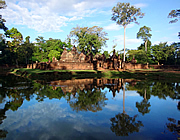
Banteay Srei is a beautiful small temple with the most exquisite carvings. The central sacred buildings are set within a wide moat, very peaceful in the early morning.
The silk farm gave us a good insight into the production of rare and beautiful golden silk.
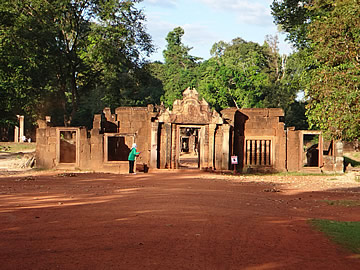
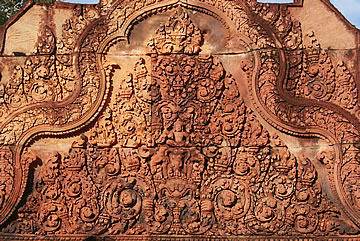
This exquisite small temple lies some twenty km north east of Siem Reap. It is covered with fine carving, very well preserved in the hard pink sandstone. I thought the carving here was even better than that at Banteay Samre.
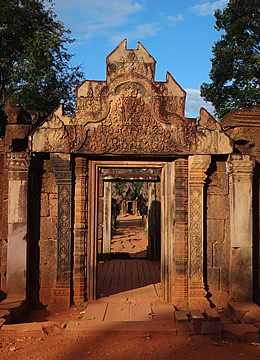
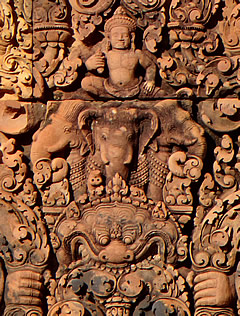
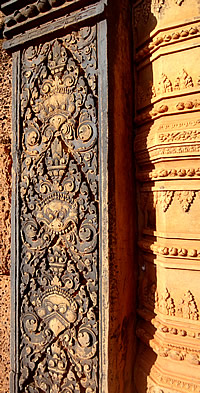
The temple was built around 967 AD during the reigns of two kings: Rajendravarman II and Jayavarman V.2
As usual the temple is approached from the east and the visitor first reaches a fine gopura, once part of the fourth enclosure, probably a wooden palisade.2
Inside the fourth enclosure a fine processional way leads to the third enclosure.

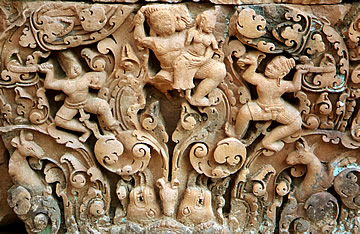
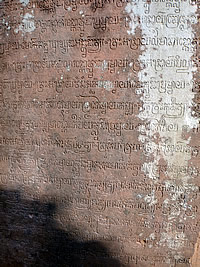
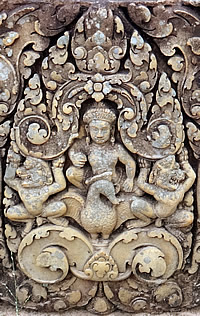
The beautiful processional way between the fourth and third enclosures was once a completely enclosed room with pillared galleries on either side.
Within the third enclosure a wide moat encircles the temple
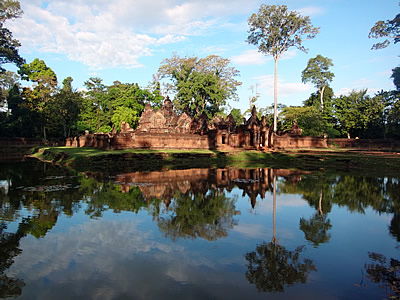
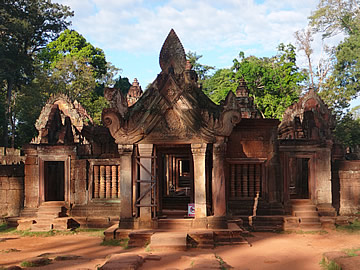
Within the ornately carved gopura of the second enclosure even the floor is carved and there is a warning not to step on the decoration!
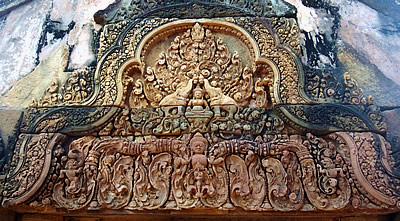
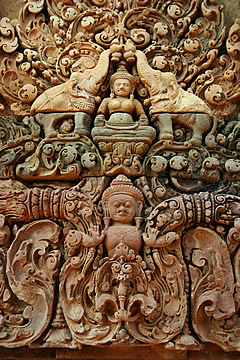
The interior of the first gopura has undergone extensive reconstruction. The carving is fabulous and it abounds with statues of temple guardians.1
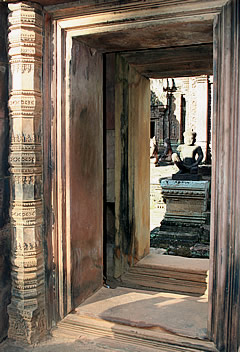
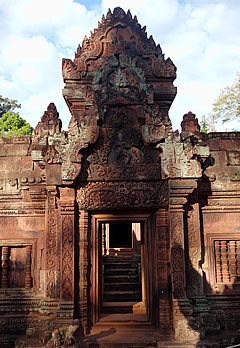
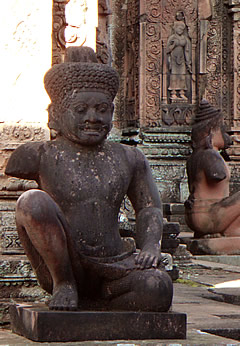
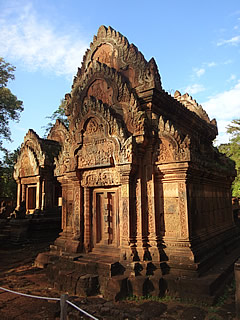
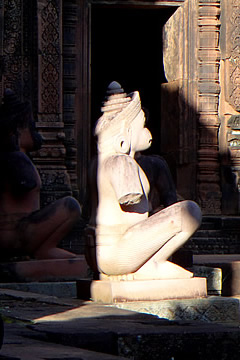
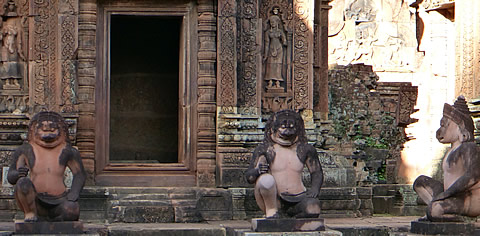
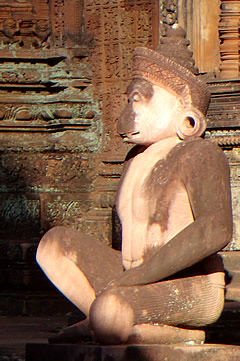
Inside the east gopura of the first enclosure are two "libraries", one to the north of the central axis, one to the south, both facing east. Each has what looks like a door in the east face but these are false and do not open.
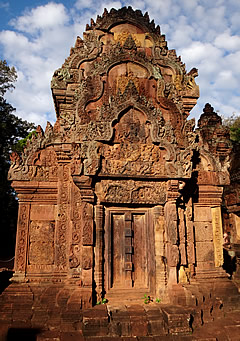
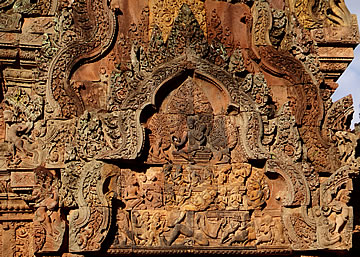
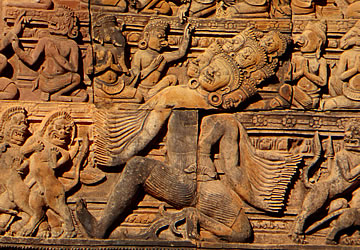
The carving on the frontons of the "libraries" are some of the best in the temple.
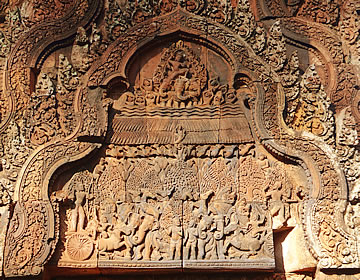
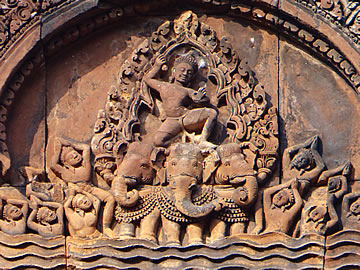
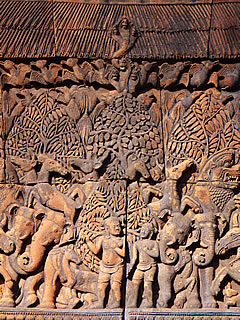
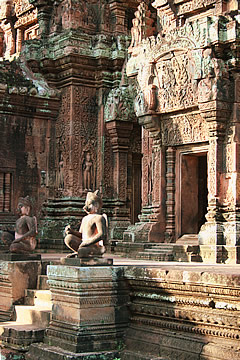
Directly ahead, through the east gopura of the first enclosure, is a mandapa, an enclosed ante-room leading to a central tower shrine, flanked on north and south sides by slightly smaller tower shrines.
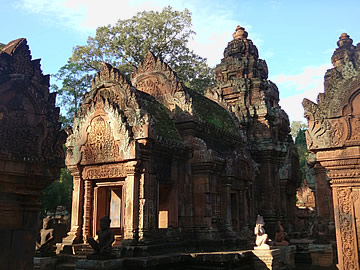
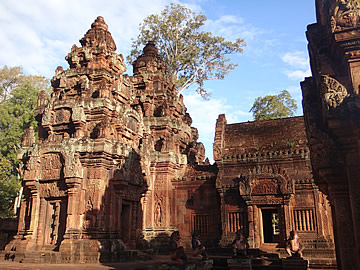
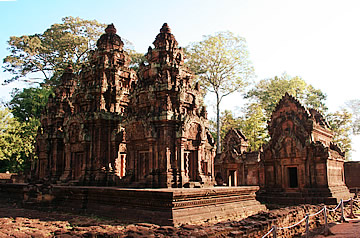
Banteay Srei is also known as the "Citadel of the Women" but why I don't know, perhaps because of the quantity of delicate carving it was felt to have a female character.
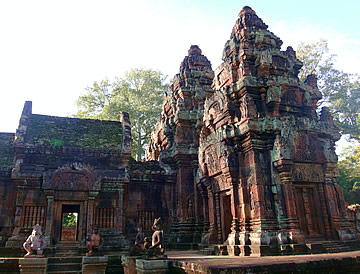
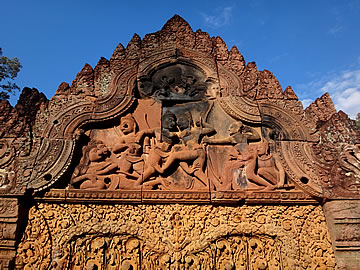
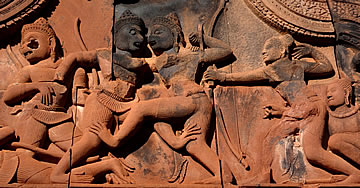
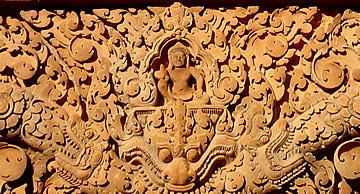
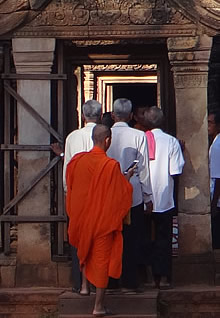
I really loved this temple. It is small but so beautiful, the carvings are exquisite and a bonus is that not many people seem to visit.
When we were there we were the only visitors until we were leaving and some kind of official group arrived, with orange-robed monks wielding mobile phones!
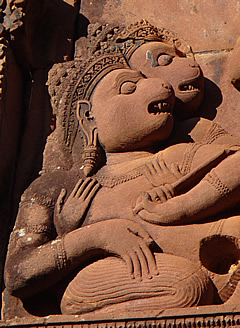
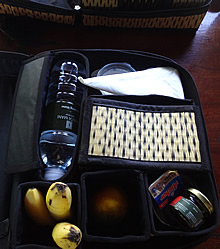
After we visited Banteay Srei we went on to a silk farm. It had been a very early start and, rather than return to the hotel for breakfast, we opted to have one packed for us. The Shinta Mani provided the most beautiful basket full of good things - much more than we actually needed. We ate in the shade of a shelter near a small market close to Banteay Srei where the guides can rest.
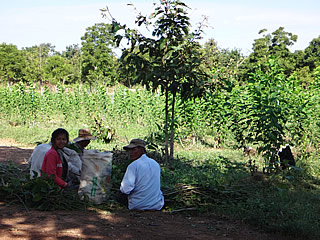
Golden Silk Pheach Preservation Center3 is a working silk farm, specialising in the very fine golden silk produced by a rare species of yellow silkworm. The yield of silk from this particular species is fifteen times less than that from the common silkworm, making it much more expensive to produce. The whole process is completed by hand, requiring very skilled operations from the workers, mostly female.
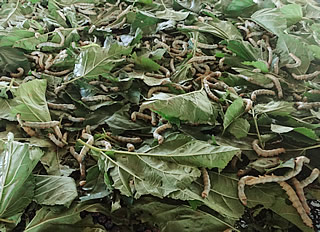
The manager set up the farm in 1992 and employs many war orphans and local rural people who have very limited resources.
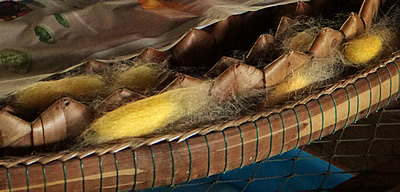
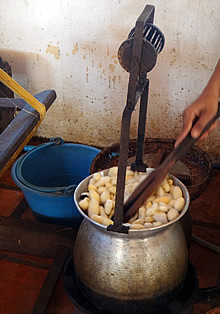
Twelve hectares of organically farmed mulberry fields supply the silkworms with their food. The silk itself comes from the cocoons of the silkworms, which unfortunately have to be killed first - if they are allowed to pupate they would break through the cocoon and destroy the precious silk.
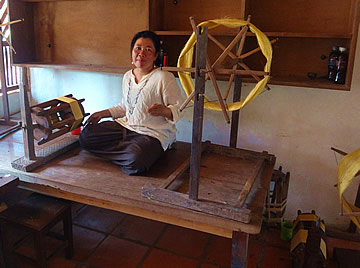
Soaking in boiling water will kill the silkworms and soften the binding agent so that the silk filament can be unwound - about 200m in length from each cocoon.
The individual filaments are much too fine to be usable, they must be twisted together to form a more substantial thread and also cleaned.
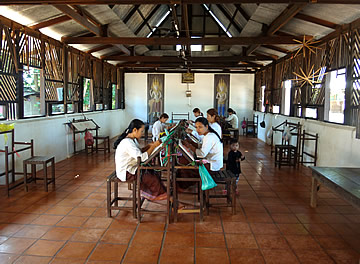
Preparing the thread for dying is another extremely skilled and time-consuming process. The thread is wound on a framework, similar to a weaving frame, and raffia is tied onto the threads to mimic the desired pattern. The coloured raffia masks these parts from the dying process. The masked thread is then dyed (with natural dyes) and wound onto bobbins ready for the weaving process.
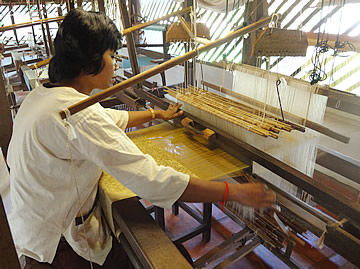
Naturally a traditional hand loom is used to create the final, finished, luxurious fabric.
These spinning and weaving techniques are ages old, used by communities all over the world.
There is a shop selling the most amazing garments, not something I would wear, and in any case, the prices reflected the rarity of the silk and the immense care, time and effort put into production.